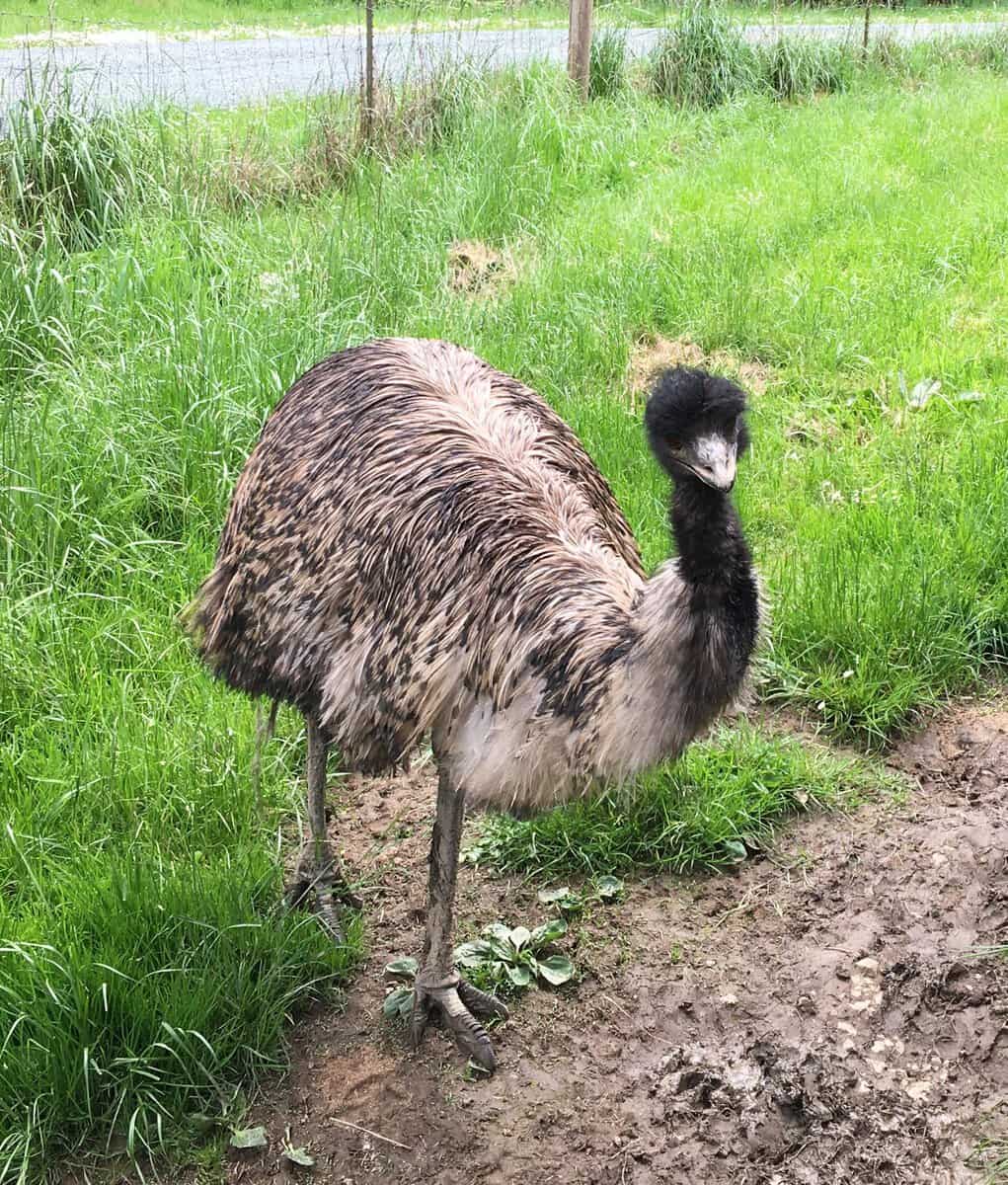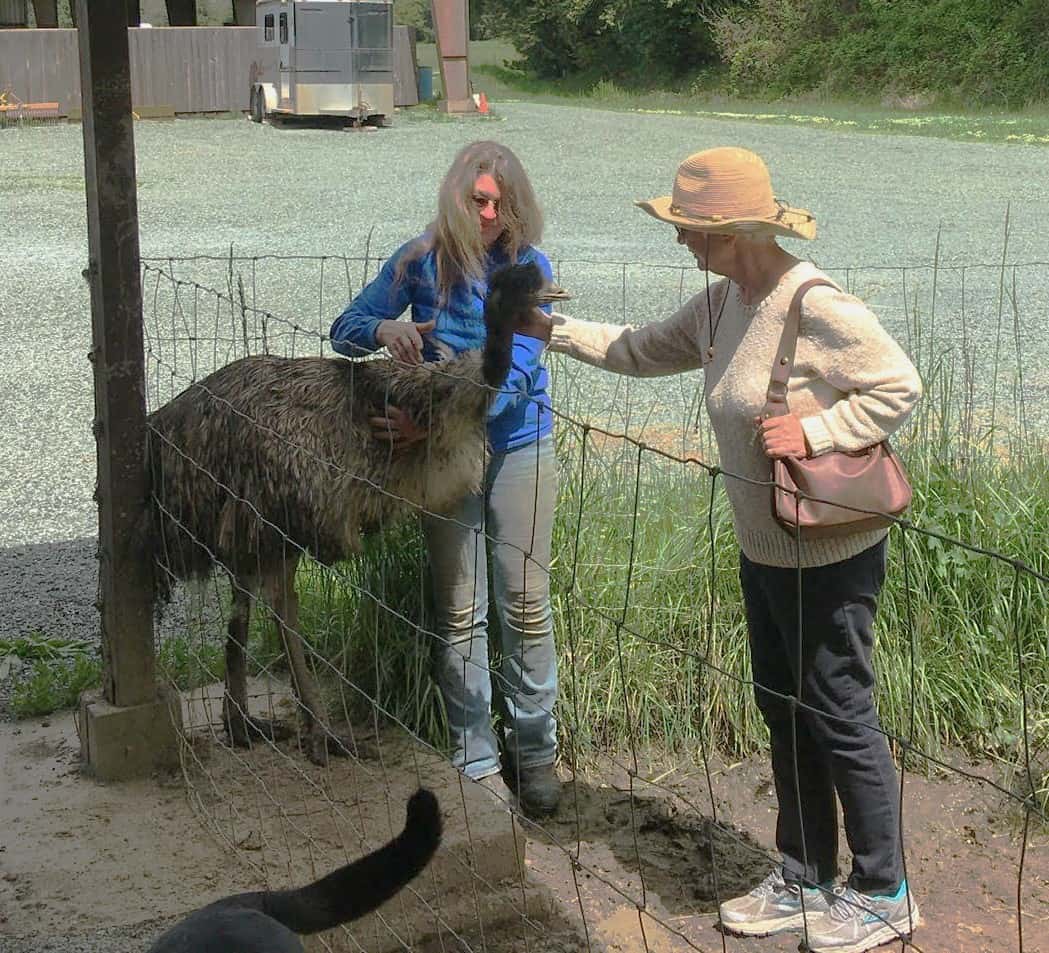Bemused Birding
by Bob Buddemeier, with Anne Newins

Hemu the emu poses for his admirers
Anne Newins is known to Complement readers for her library displays and book reviews (see the current issue’s Arts & Info section). However, her interests are not limited to the literary-artistic; she is also a dedicated gardener and birder (see birding article at https://thecomplement.info/2022/07/03/birders-take-flight-at-rvm/). In the latter role she has agreed to contribute to our “Critter” issue, and this is a brief account of her recent experience on a visit to new acquaintances Nancy and Jim on their rural property in Coos County.
Nancy is also a birder (and a 3-horse, 3-dog critter person), and arguably an overachiever in the category. Among her livestock is Hemu (above right), the emu. The backstory: when she and her late husband moved to Oregon, they took their (then-young) children to a fair, where they bought a raffle ticket for two emu chicks. They won, and named the birds Hemu and Shemu. Emus have lifespans of 35 years in captivity, and as any parent could predict, the children did not take their pets with them when they left home.
Hemu is a bit shy, so Nancy, his emum, needed to provide guidance during the introductions (below). Hemu’s stepfather, Jim, opined that Hemu was shy in more ways than just socially: “See that big yellow eye? It’s larger than his brain.” Fortunately, intellectual companionship is usually not high on the list of reasons for keeping animals, and there were other rewards for keeping emus.

Bird and birders — L to R, Hemu, Nancy, and Anne.

Emu egg, with chicken eggs for scale
Before Shemu passed away at a regrettably young age, there had been a reasonable production of emu eggs. Nancy gifted Anne with an emu egg (shell), shown at left, and explained that there was a ready market for blown emu eggs — understandably, in view of their size and color. In terms of weight or volume, an emu egg is equivalent to 9-12 L or XL chicken eggs. The contents of one emu egg can produce a VERY large emulette, which Jim and Nancy assert tastes every bit as good as egg dishes made with more conventionally available ingredients.
Final thoughts for RVM (human) residents:
Consider our free-range avifauna that wander around campus when and where they please (see accompanying article by Robert Mumby). Consider what it would be like to have emus in that role. Does that evoke strong emutions?
Why doesn’t “emulate” mean “behave like an emu?” Or does it?
Thirst for knowledge not yet slaked? Try https://en.wikipedia.org/wiki/Emu





Thank you Bob, and Anne, for sharing information about the emu. What an amazing big bird!